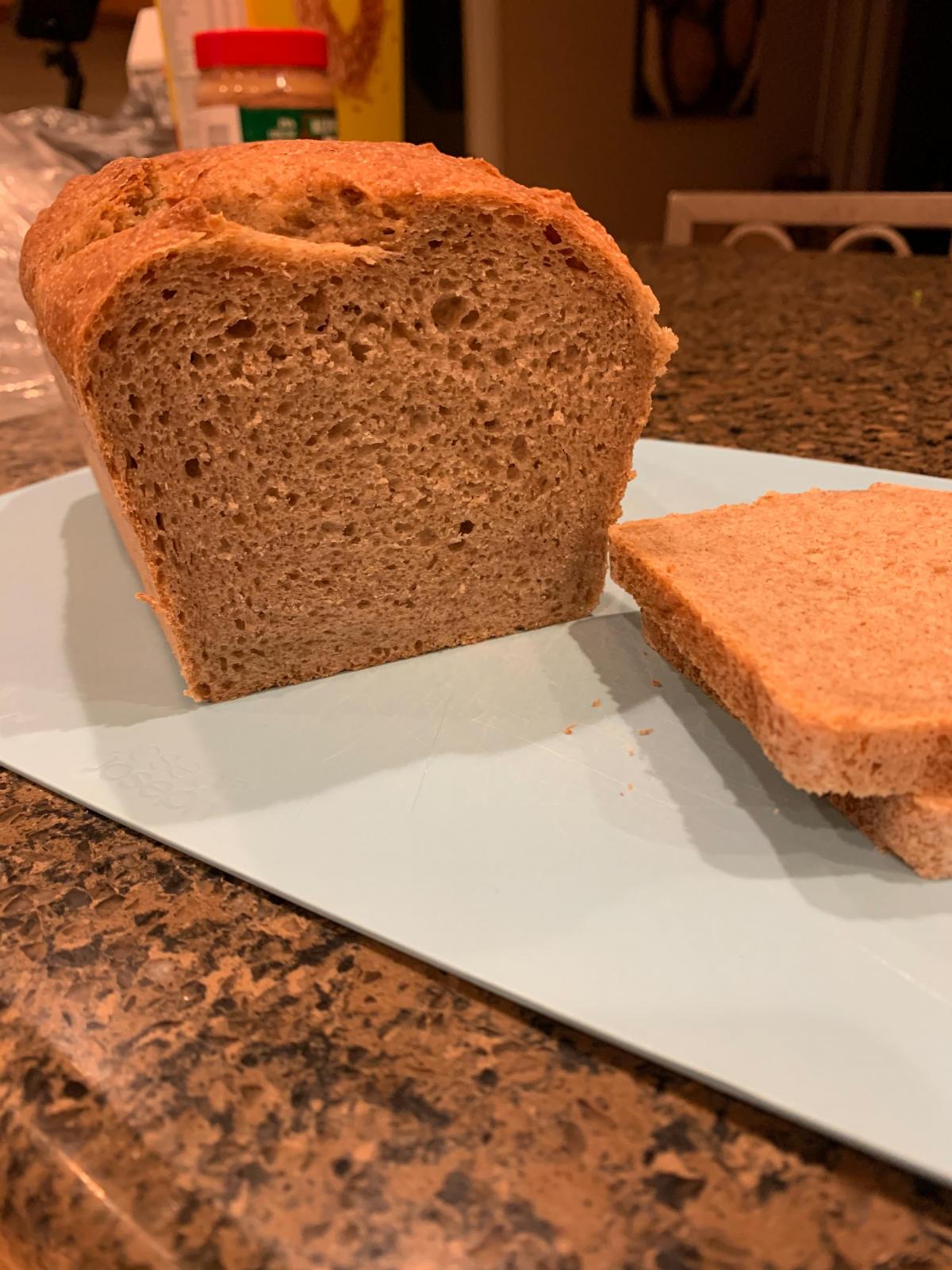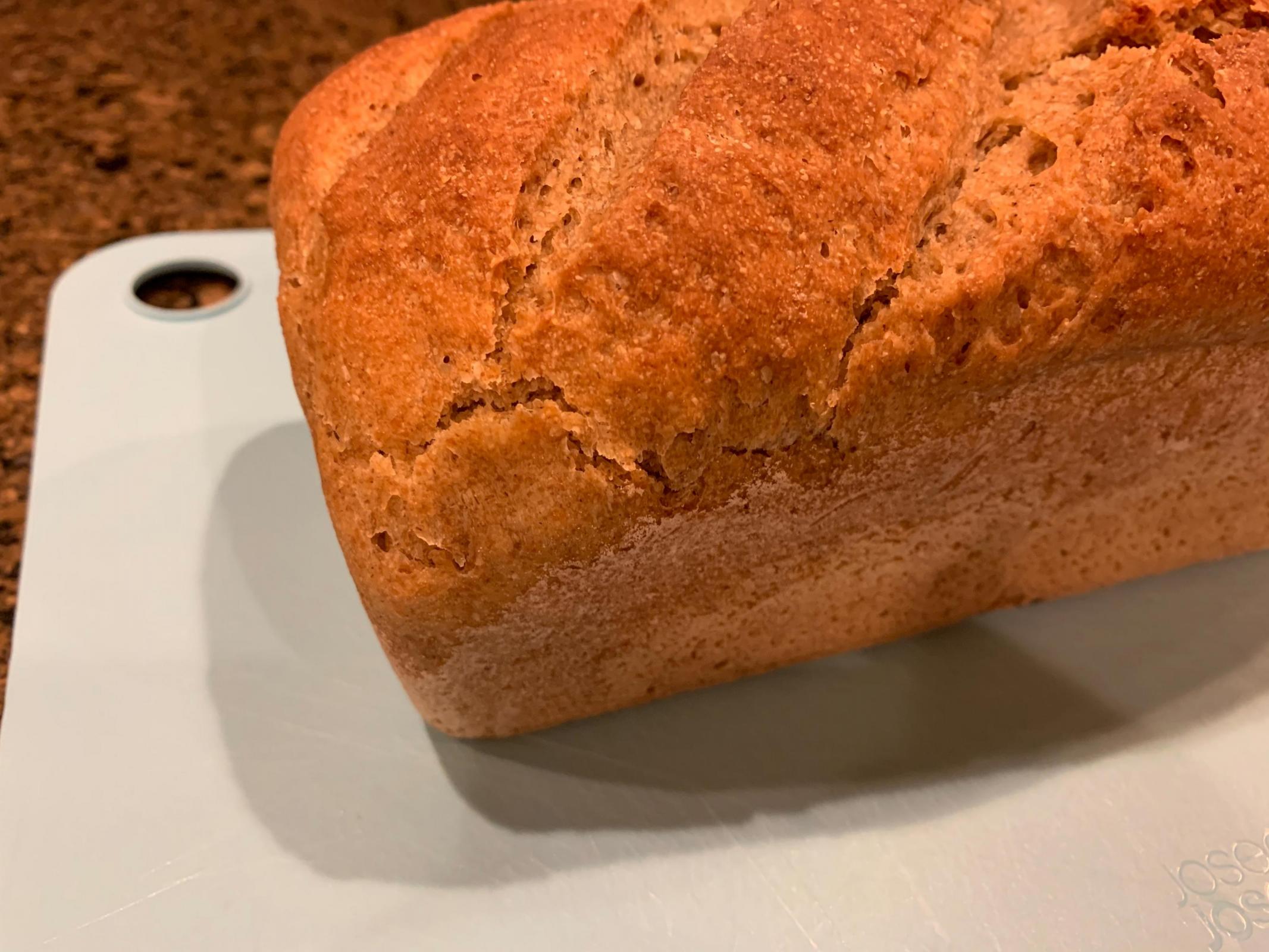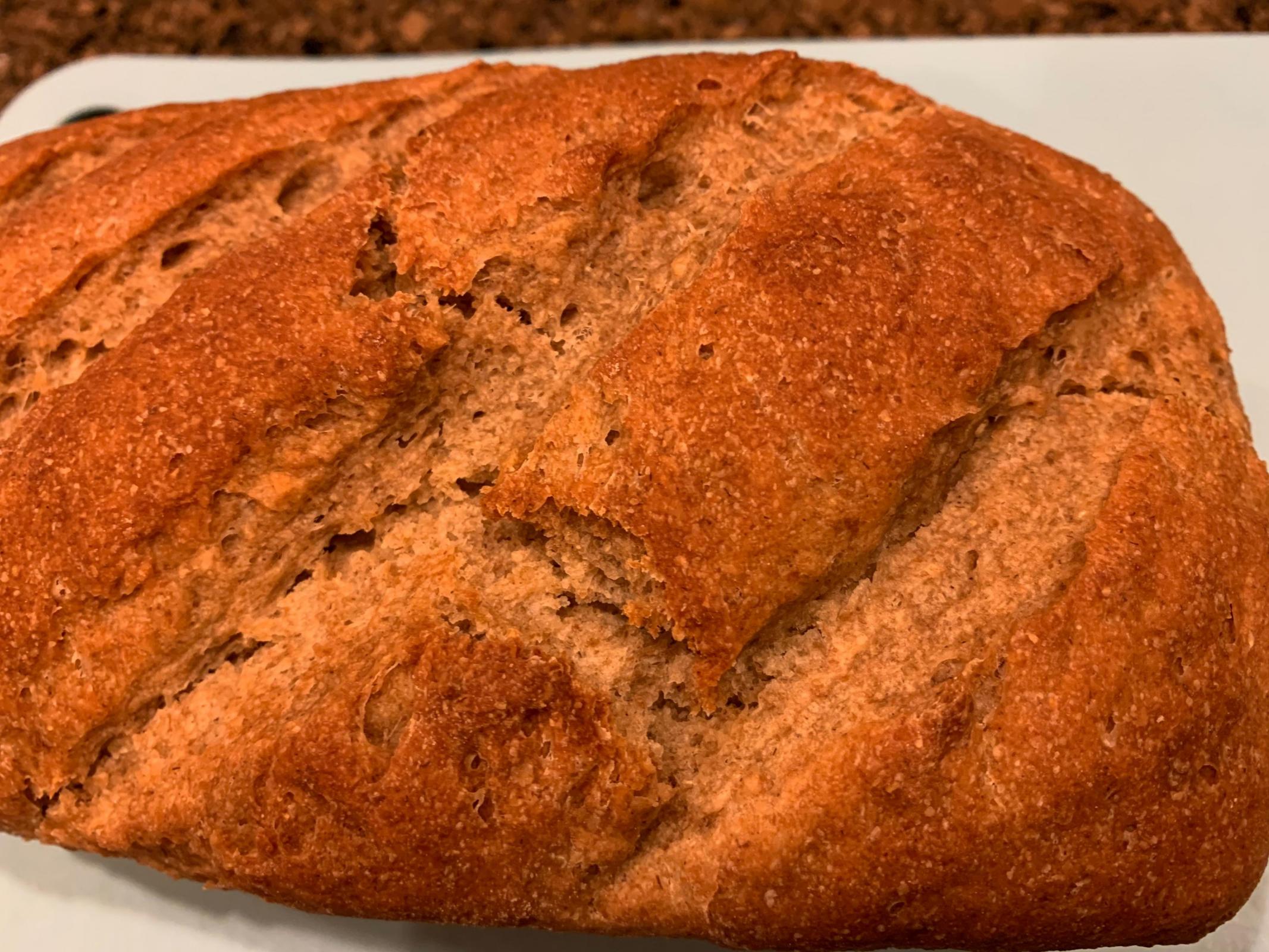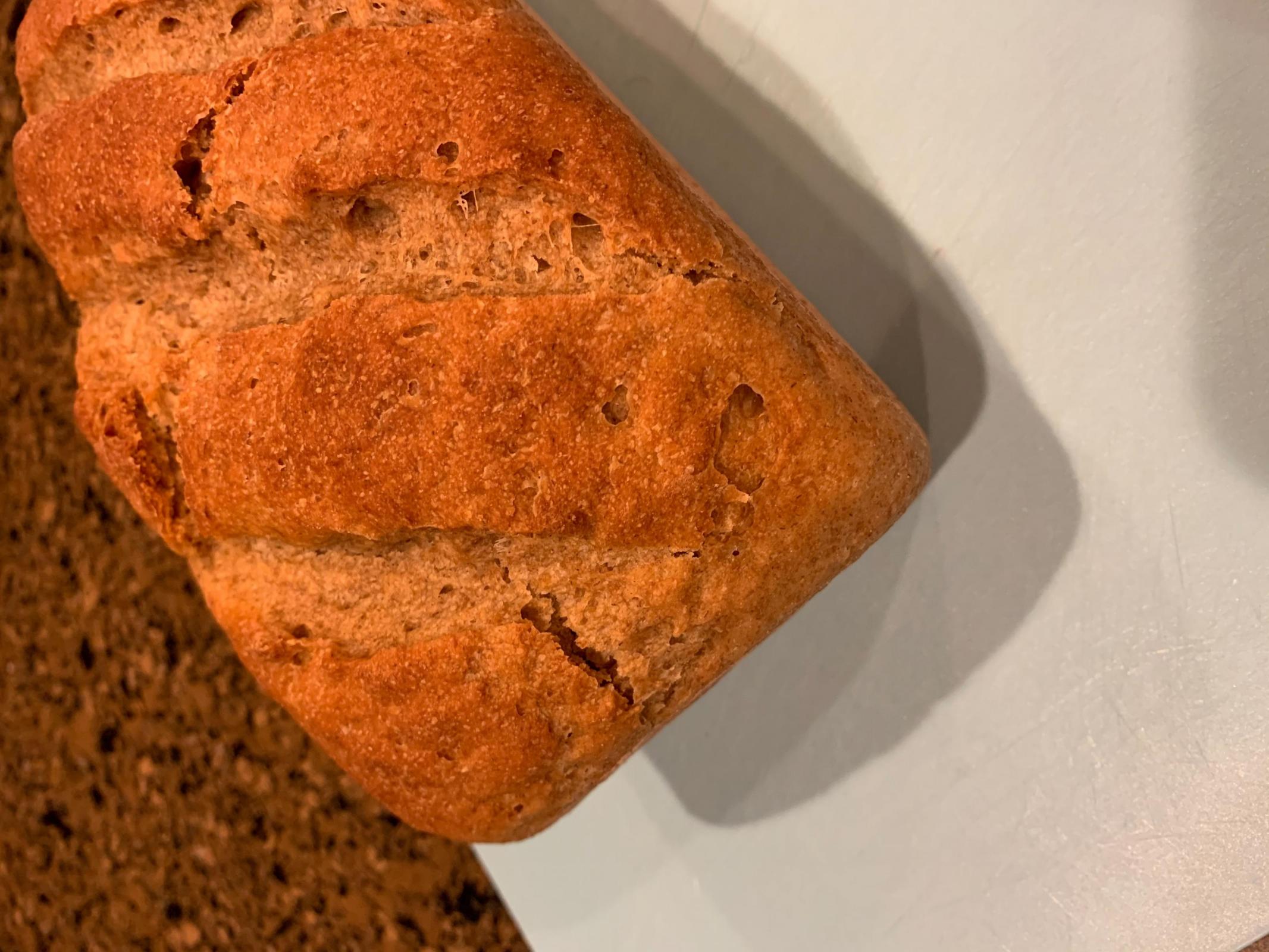
First try on a 50 Rye:50 AP sandwich bread

Hoping to get some thoughts from the community on this loaf and what I can do to improve it. I'm still very early in my sourdough learning curve, and trying to understand what my final product is telling me. :-)
I'm creating a 50:50 rye:AP starter and it's just about there. I refrigerated the discard for the last three feedings and used them in this recipe. I know not ideal, but hated to see it go to waste. Recipe as follows:
The starter was 50g of fresh discard that passed the float test (have been building it up and finally got there) and 150g of refrigerated discard brought up to room temperature. Also added 2g of active dry just to make sure I had enough yeast to get a rise.
30 minute autolyse
~20 minute hand kneading. Dough was quite sticky at start. Did dry up some, but never reached a window pane quality. Kept sticking to the counter top throughout the kneading process.
3 hour bulk fermentation at 74 deg F. Dough volume doubled. Did a bowl S&F at 60 and 120 minutes.
One more counter S&F with 10 minute rest prior to final shaping. Dough wasn't sticky at this point and did not stick at all to a lightly floured counter top.
90 minute second rise at 78 deg F.
475 deg F pre-heat dropped oven temp to 375 deg after dough went in the oven. 10 minutes with water pan in the oven and then 30 minutes with it removed.
Overall, happy with the loaf. Made some good toast with my eggs this morning. Loaf is a bit "heavy".
One observation was that the top of the dough was not smooth and uniform after the second rise. There were a couple spots that had open "holes". I scored through one section, but you can see a couple spots where the holes were. Also, this is the first loaf I've made that the loaf split in areas other than where I scored the dough.
Just curious if this has any obvious tell-tale signs of under proofing, over proofing, too high a hydration, not enough kneading, over kneading, the nature of high rye breads (first one I've done this high), etc.
Thanks!





Some things to try:
Use only rye flour in the starter and hold the yeast for the mix stage. This will acidify a larger portion of the rye and should help improve texture.
In addition, this is the kind of load that could benefit from extra strong wheat flour if you have access to some.
what you mean by the "mix stage"?
Thank you for the tip on the flour. I need to look into extra strong wheat flour. I don't think I have access to anything like that locally, but assuming I can get it on-line.
The Mix stage is when you incorporate the bulk of the flour/water with the 200g of starter. I'd suggest only using yeast at that stage. It's counterproductive to put it before.
That's what I did. Mixed the 200g of starter with 150g of water and activated the dry yeast in 75g of water with the sugar. Combined both of them with the flour.
One observation was that the top of the dough was not smooth and uniform after the second rise. There were a couple spots that had open "holes".
Try to get the proofed dough earlier into the oven, maybe a half hour earlier. A smooth surface is made bumpy from bubbles rising up through the dough and popping on the surface. It means the dough is loosing precious gas.
The crumb looks like it was getting very close to over proofing. A little bit longer proofing and you will see those barely noticable dense areas about half an inch from the bottom and sides become more prominent. The upper third middle of the crumb is showing a few larger bubbles that with more proofing begin to break into each other and let the interior crumb fall. Don't want that happening.
Very good outcome for the first rye/wheat loaf. Congratulations! I find especially a 50/50 mix tricky.
I still can't figure out the directions. What did the loaf weigh after mixing everything together? Scoring can be done before the final rise. The score lines may close up but they reopen in the oven.
That was one of the learning things I was looking for. Fair to say then that bubbles on the dough surface after a good rise combined with denser areas towards the bottom of the loaf is a good sign of over-proofing?
Sorry about the confusion on the recipe. Total dough weight (excluding butter, sugar, and salt) was 801g (238g AP flour, 238g rye flour, 325g water).
.sorry having trouble posting comment.
I hate it when technology doesn't work the way it's supposed to. :-)
I'll bet it was tasty!
Looks a bit undercooked to my liking. Note the bottom of the loaf and color. Try less dough in the pan and a longer cooking time. And give at least 4 hours unmolded, overnight is better, before slicing.
Doubtful with 50% rye that windowpane would be achieved. It's the nature of the beast.
3 hours + 90 minutes is longish for rye. Try 2.5 hours total bulk + proof time.
Cracked top is typical with rye.
Toast is always good because it removes water and gives crunch. A good bread in my view is equally as delightful untoasted, as it is toasted. That's a tall order.
Thanks! It made a good turkey panini for lunch too. Will try a plain turkey sandwich tomorrow for the true test.
I did let it sit overnight before slicing.
Doubtful with 50% rye that windowpane would be achieved. It's the nature of the beast. - I was wondering this. The dough consistency changed after maybe 8-10 minutes of kneading, but it never improved after that. Could have stopped there I'm guessing.
Will try a shorter bulk fermentation + proof time and longer cook time with the next loaf.
the rye is very mild. I expected it to have a much stronger rye flavor at 50%.
Will try again with some of these tweaks.
Which brand and type of rye flour did you use? From experience it seems like rye flour needs to be very fresh, and whole rye gives better rye flavor. I use rye meal and it gives nice aroma and color.
Bob's Red Mill Whole Grain Dark Rye